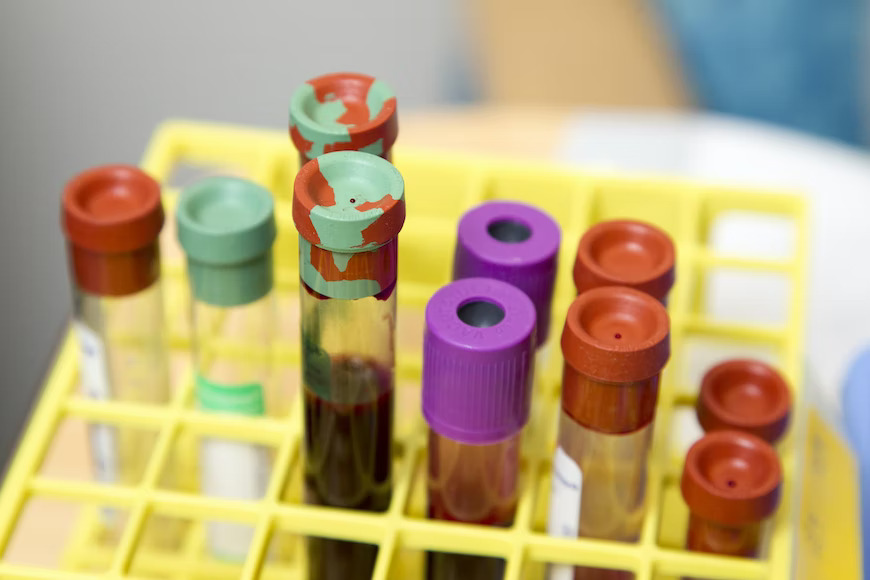Preventive Healthcare
Leukemia Blood Test: What It Is, Purpose, Procedure and Result
3301 Views
0

What is a Leukemia Blood Test?
A leukemia blood test is a diagnostic test to detect complete blood count or CBC that evaluates the levels of white blood cells, red blood cells, and platelets in the body. A sample of the patient's blood is taken and analyzed in the laboratory. This is also called the complete blood count test.
Abnormal levels of WBC, RBC, or platelets may indicate leukemia. Additionally, the test also may show if the individual has leukemic cells.
This is the first line of diagnosis. After a Leukemia blood test returns positive, the next step is to detect the type of leukemia through a bone marrow biopsy.
What is The Purpose Of a Leukemia Blood Test?
A leukemia blood test is done to screen for leukemia, a cancer of the blood. Leukemia leads to the uncontrolled growth of abnormal cells in the bone marrow.
Compared to other cancers, leukemia does not result in a tumour. Instead, the abnormal cells produced in the bone marrow are released into the bloodstream. Hence, a leukemia blood test is done to detect the presence of these cells in the bloodstream.
A leukemia test aims to assess the complete blood count or CBC that evaluates the levels of WBC, RBC, and platelets and analyzes if they are present at abnormal levels.
How Does Leukemia Develop?
Leukemia develops in the bone marrow and does not form a tumour.
Instead, it leads to uncontrollable cell production. This is due to DNA mutation in the cells of bone marrow. The bone marrow produces three different types of cells:
- RBC: Red blood cells which carry oxygen and vital materials to all the cells in the body.
- WBC: White blood cells that fight any form of infection in the body.
- Platelets: They are necessary to induce blood clots.
What is The Procedure For a Leukemia Blood Test?
It is a simple test requiring blood to be drawn from your arm into a tube or vial. This is sent to the laboratory.
There is no prior preparation needed for the test. As it is a simple, routine procedure, you may be recommended to stay hydrated. There is no fasting required.
The procedures done on the blood sample in the laboratory include complete blood count, microscopic evaluation of the blood, or flow cytometry.
Initial results may be available within 24 hours.
How is a Leukemia Blood Test Done?
Based on the type of test recommended by the healthcare professional, leukemia blood tests are mainly divided into:
- Complete blood count (CBC): This is a quantity-based blood test that measures the amount or levels of RBC, WBC, and platelets in the blood. It measures the different numbers of WBCs as well. In this test, blood may be drawn from your arm and collected in a test tube. This is then analyzed in the laboratory with different dyes to identify different types of blood cells.
- Flow cytometry: A blood sample or bone marrow sample may be used for this test. Flow cytometry detects cancer cells based on protein markers on their cell surfaces. Your blood sample is mixed with specific antibodies that identify these protein structures. Flow cytometry reveals the presence and type of cancer cells.
- Peripheral blood smear: In this blood test, you may be asked to provide a drop of blood, which is then smeared on a glass slide and analyzed. The RBCs and WBCs are checked for appearance and number. Any abnormalities in the way they appear may be an indicator of leukemia.
Timing of a Leukemia Test: When Should You Get it Done?
Leukemia does not show any obvious symptoms in the beginning. While symptoms may take years to show, the cancerous cells progressively invade the liver, spleen and lymph nodes.
But as the disease progresses, certain symptoms are seen. Your healthcare provider may suspect leukaemia if you experience enlarged lymph nodes, liver, spleen, fever, persistent fatigue, swollen gums, and rashes. At this point, you may be asked to take a leukemia blood test such as CBC.
What Do Leukemia Blood Test Results Mean?
The normal WBC count for an adult is 4,500–11,000/μl. To diagnose leukemia, WBC count includes levels outside this normal range.
The results of different blood tests such as CBC, flow cytometry, and peripheral blood smear help diagnose the presence and type of leukemia. The results related to different types of leukemia are addressed below.
- Acute myeloid leukemia (AML): When the blood tests have high levels of immature WBC and low levels of RBC and platelets, it may indicate acute myeloid leukemia (AML).
- Chronic lymphocytic leukemia (CLL): If the blood test shows high levels of lymphocytes, which is a type of WBC, and low RBC and platelets, it could indicate chronic lymphocytic leukemia. A peripheral smear under the microscope may reveal abnormal, unhealthy cells.
- Chronic myeloid leukemia (CML): A blood test result with high levels of WBC and the considerable presence of myeloblasts can indicate chronic myeloid leukemia. Even in this case, the RBC and platelet count may be low. The leukemia WBC count in CML is 100,000/μl.
- Acute lymphocytic leukemia (ALL): As the name suggests, the blood test results may reveal high levels of lymphoblasts, which are immature WBC. Low levels of RBC and platelets accompany this.
Conclusion
Preventing the spread of cancer is the best strategy for a leukemia diagnosis. Getting tested specifically for a type of leukemia can help design the best course of treatment for faster recovery.
Do you have to get a leukemia test done but are unsure where to get it? Book a leukemia test online and get tested with Metropolis Healthcare at home!























 WhatsApp
WhatsApp